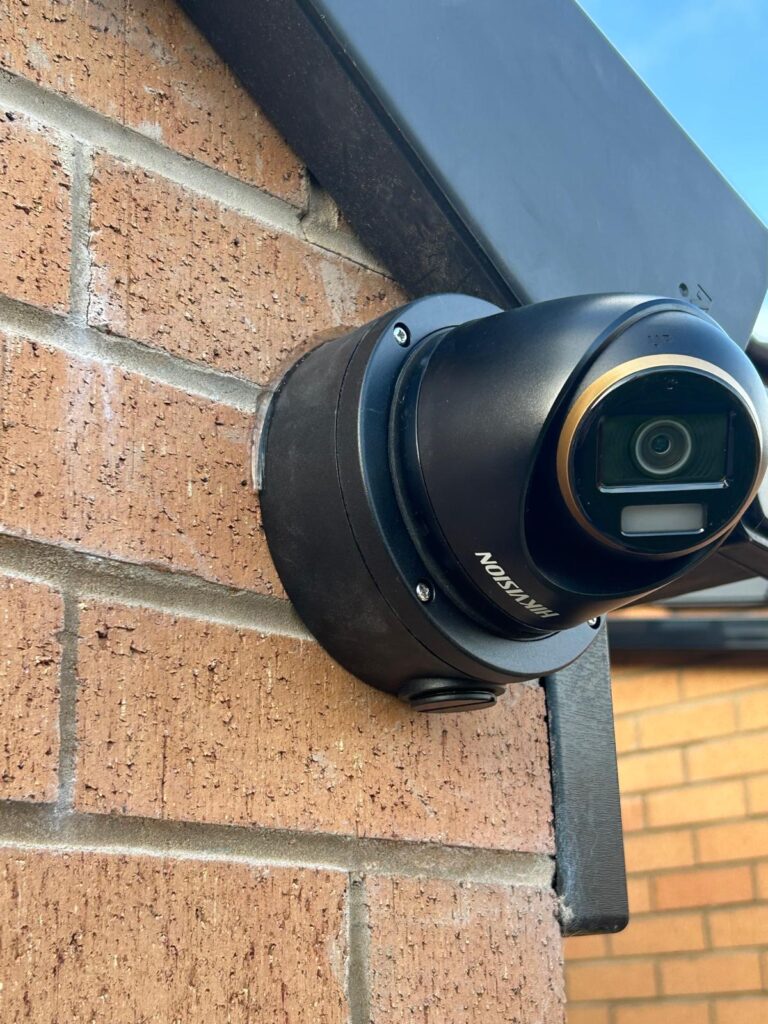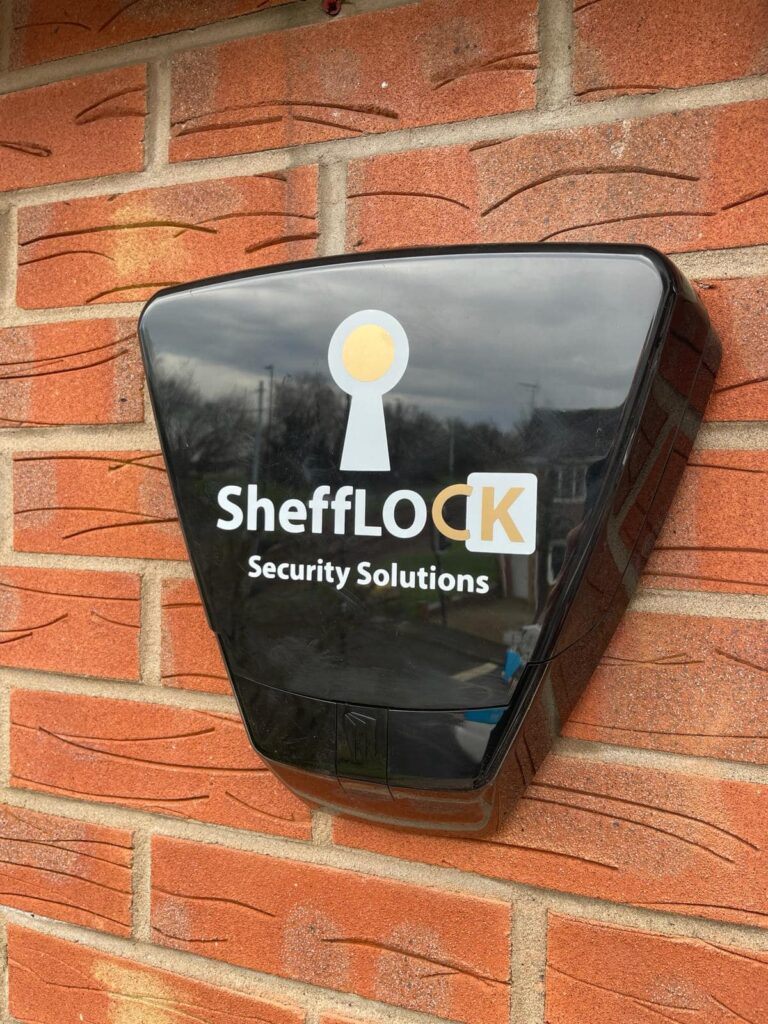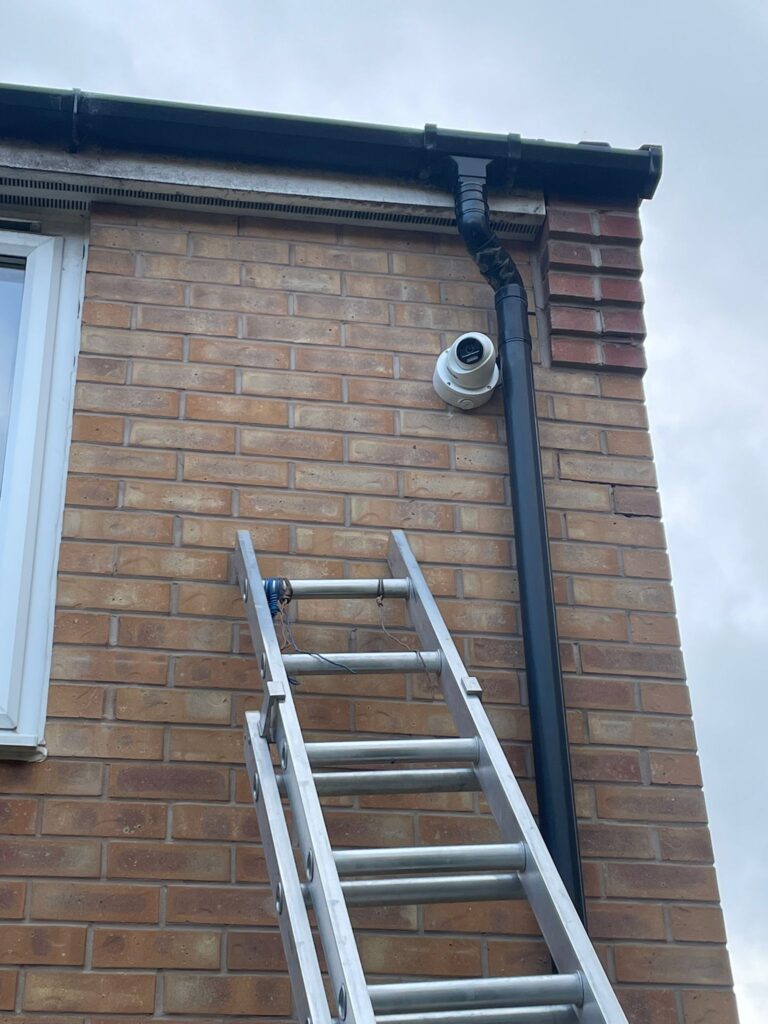In today’s world, home security is more important than ever. With rising crime rates and increasing concerns about personal safety, investing in a robust security system is a wise decision for any homeowner.
Our latest blog post will walk you through the process of installing CCTV and alarm systems at your home, empowering you to make informed choices and enhance your peace of mind.

1. Assessing Your Needs:
- Identify Security Vulnerabilities: SheffLOCK can help you conduct a thorough FREE home security assessment of your property. Identify potential entry points, areas prone to vandalism, and blind spots.
- Determine Your Budget: CCTV and burglar alarm systems come in a wide range of prices. Set a realistic budget that aligns with your needs and financial capabilities.
- Consider Your Lifestyle: Do you require regular monitoring or is occasional monitoring sufficient? Will you be integrating smart home features like voice control?
2. Choosing the Right System:
- CCTV Systems:
- Wired vs. Wireless: Wired systems offer better signal stability and are generally more affordable, while wireless systems provide greater flexibility in placement.
- Camera Types:
- Bullet Cameras: Ideal for general surveillance, offering a wide field of view.
- Dome Cameras: Discreet and less prone to vandalism.
- PTZ (Pan-Tilt-Zoom) Cameras: Allow for remote control and zooming in on areas of interest.
- Resolution: Higher resolution (e.g., 1080p, 4K) provides clearer footage and better identification.
- Night Vision: Infrared or low-light cameras ensure visibility even in darkness.
- Alarm Systems:
- Wired vs. Wireless: Similar considerations to CCTV, with wireless offering more convenience.
- Sensors:
- Control Panels: The central hub of your alarm system, allowing for arming/disarming, monitoring, and customisation.
- Smart Home Integration: Consider systems that integrate with smart home devices like voice assistants and smart locks.

3. Professional Installation vs. DIY:
- Professional Installation:
- Pros: Ensures proper installation and configuration, often includes warranty and maintenance, provides peace of mind.
- Cons: Can be more expensive than DIY.
- DIY Installation:
- Pros: More cost-effective, gives you control over the entire process.
- Cons: Requires technical expertise, may void warranties if not installed correctly, potential for errors.
4. Key Considerations:
- Data Storage: Choose a reliable method for storing CCTV footage (e.g., cloud storage, local hard drive, NVR).
- Monitoring: Determine your monitoring preferences:
- Self-Monitoring: Review footage yourself as needed.
- Professional Monitoring: A security company monitors your system and responds to alarms.
- Maintenance: Regular maintenance is crucial to ensure optimal system performance.
- Legal and Ethical Considerations: Be aware of local laws and regulations regarding CCTV surveillance. Respect your neighbours’ privacy.
5. Tips for Enhancing Your Security:
- Visible Deterrent: Place CCTV cameras in highly visible locations to deter potential intruders.
- Proper Lighting: Install motion-activated outdoor lighting to illuminate dark areas.
- Landscape Maintenance: Keep bushes and trees trimmed to avoid creating hiding spots.
- Neighbourhood Watch: Participate in your local neighborhood watch program to enhance community safety.

By carefully considering these factors and taking the necessary steps to install and maintain your security system, you can significantly enhance the safety and security of your home. Remember, a well-designed and properly maintained security system provides peace of mind and protects your most valuable assets: your family and your belongings.
Don’t Compromise Your Home’s Security.
Invest in quality CCTV and alarms with SheffLOCK. Contact us to learn more about our range of security solutions and book a FREE Home Security Survey.
SheffLOCK: Sheffield Locksmiths – Securing Your Home, Safeguarding Your Peace of Mind.
Share on Social: